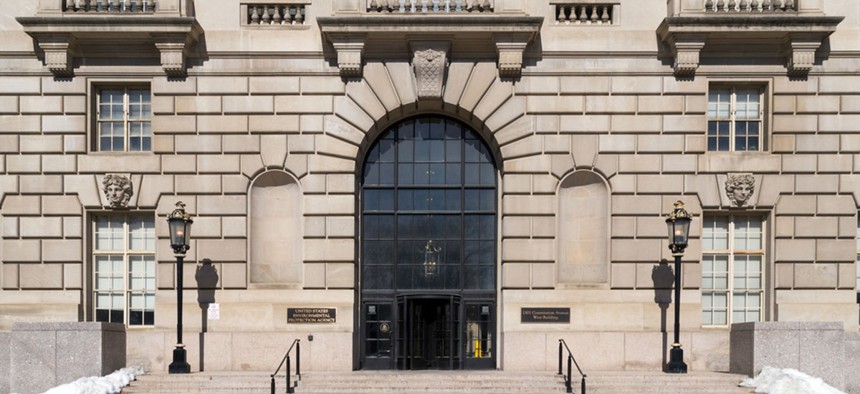
The Environmental Protection Agency is headquartered in Washington, D.C. Adam Parent/Shutterstock.com
Upcoming Ozone Rules Don't Have Many Fans
Environmentalists are ready to be disappointed by the EPA’s new standards, but manufacturing groups won’t be happy either.
Environmentalists have been burned by the Obama administration before on smog regulations. Now they’re worried that it’s about to happen again.
The Environmental Protection Agency is under a court order to finalize a rule tightening standards for ground-level ozone by Oct. 1. That’s the same air-quality rule that was pulled by the White House in 2011 over economic concerns, a move that left the environmental community incensed.
Deep into a second term where President Obama has been aggressive on environmental issues, the ozone rule won’t be yanked again. But environmentalists are now girding themselves for another disappointment: that the standard won’t be tight enough.
Sources familiar with the discussions say that the EPA is pushing to lower the ozone standard of 75 parts per billion to 70 ppb, the high end of the 65-70 ppb range that the agency proposed last fall.
The White House could lower the final standard down to 68 ppb, a seemingly minor tweak, but one that could require dramatically more pollution control. With days to go before a decision comes out, environmentalists are making the case that 70 ppb just won’t be enough, even as they prepare for it.
A 70 ppb standard “would be a betrayal of the Clean Air Act’s promise of healthy air and a betrayal of the millions of kids and seniors and asthmatics who will not receive the protection that doctors say they need by such a standard,” said David Baron, a managing attorney for Earthjustice.
Baron said there was a “good likelihood” that his group could sue the EPA if such a standard was issued.
The ozone standard sets the limit for ozone pollution, or smog, and requires states that violate the level to craft compliance plans. Ozone has been linked to asthma, respiratory damage and a host of other health impacts.
Business and industry groups have long opposed any bid to lower the standard, saying that it would plunge too many areas of the country into nonattainment status. Complying with the rule would require states to craft plans that cut down on pollution from cars and industrial sources, adding up to a rule that opponents say would be the most expensive in history.
Ross Eisenberg, vice president of energy at the National Association of Manufacturers, said that his group had not done an analysis of what would happen under a 70 ppb standard, but that anything below the current standard would be a blow to its members. He did not say whether NAM would consider a challenge over a 70 ppb level, but added, “we’d have to do a lot of work to figure out what this means for our members and what the costs would be.”
“What I do know is that 68 ppb is markedly worse than 70 [ppb],” Eisenberg said. That seemingly small difference, he said, would require new technology to be added to manufacturing sites and that more areas of the country would be out of attainment.
Opponents have pushed hard on purple states and moderate politicians in a bid to turn them against the standard.
But public-health groups say that the country has too long been stuck on a 75 ppb standard that’s insufficient for public health (it was first set under the George W. Bush administration, and greens sued because they felt it was not tough enough). The EPA’s scientific advisory board, which analyzes scientific literature on pollution, said last year that 75 ppb was insufficient for public health, and that vulnerable groups such as children or the elderly would see protection only at 60 ppb.
That’s the level where most of the messaging and lobbying from the Left has centered, even after the EPA didn’t include it in the proposed range that the agency was considering.
They’re used to disappointment on this. Ahead of the 2012 elections, the White House yanked its last review of the ozone standard over concerns that it would damage the economy. The move drove a deep wedge between environmentalists and the White House, and has left them frustrated on ozone.
John Walke, clean air director for the Natural Resources Defense Council, said that there’s still hope that, with a few days to go, the White House will lower the proposal, saying it would be “bewildering that administration would set an unprotective level … after having so many years to get this right.”
“The message,” he added, “is that President Obama should do better than EPA’s worst.”






